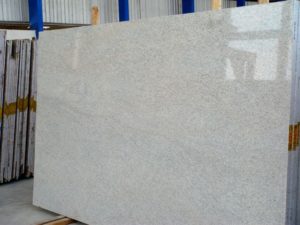Beginner’s Guide to Indian Marble and Italian Marble trends
Marble is still a highly desirable natural stone in the flooring industry for Indian homes compared to other factory-made materials such as vitrified or porcelain tiles. There are many varieties of Indian marble and Italian marble in different colors and vein patterns. If you are planning to use marble for your home and haven’t yet decided whether to go with Indian marble or Italian marble, this article can help you to make your decision.
Difference between Indian and Italian marble
Indian marble is quarried from the states of Rajasthan, Gujarat, Andhra Pradesh, and Madhya Pradesh, while Italian marble is quarried from Northern Italy and is usually available in slabs.
Italian marble has a very high luster, as seen in this image, and is a very soft stone with a crystal-like appearance. Indian marble has a medium luster and is a comparatively harder stone.
Both these types of marble are commonly available in a thickness of 18-20 millimeters. However, the thickness of Indian marble can go up to 30 millimeters.
Different types of Indian and Italian marble
Indian marble comes in a wide range of colors and varieties, such as Fantasy Brown Marble, Green Marble, Mahi White Marble, Marine Black Marble, Mercury, Black Marble, Rain Forest Brown Marble, Rain Forest Green Marble, Red Spider Marble, River, Blue Marble, Spider Green Marble, Spider White Marble, Toronto Brown Marble and so on.
The most common types of Italian marble include Italian Botticino, Perlato Sicilia, Nero (black) Marquina, Rossa Verona, Crema Marfil, Carrara marble and Statuario.
Drawbacks of Indian marble and of Italian marble
Both these types of marble are very porous, which makes them susceptible to stains.
Since Italian marble is soft, it is prone to scratches, hence heavy objects should never be dragged on a floor made of stone.
All the marble slabs should be perfectly leveled during installation, otherwise, they may develop deep cracks over a period of time.
Another drawback of using Italian marble is that it is a very soft material and develops prominent hairline cracks over a period of time; this characteristic makes the harder Indian marble a better choice than Italian marble.
Maintenance of Indian marble and of Italian marble
Italian and Indian marble have the tendency to lose their luster after a few years. Therefore, both should be periodically polished to retain their original shine. Marble polishing can be done by using carborundum stone and tin oxide.
All the liquid spills on the marble should be cleaned immediately.
The routine cleaning of both these types of marble involves cleaning with a mild detergent or with mild cleaners which are specially formulated for cleaning marble.
Since marble is a delicate stone it should never be scrubbed. Italian marble and Indian marble should be sealed with impregnating sealers which create a protective and stain-resistant surface.
Cost for Indian Marble and Italian Marble
Good-quality Indian marble is available at prices from ₹80 per square foot onwards.
Italian marble is available at prices from ₹350 per square foot onwards. This makes Indian marble much more affordable than Italian marble.
Conclusion
The timeless style of marble isn’t just aesthetically pleasing; its design helps to disguise wear and hide minor stains. This timeless stone gives any interior a high-end look and, although marble is porous, staining can be a problem. With proper care, marble can last decades. Regular sealing and special care can keep the beautiful surface looking its best.



